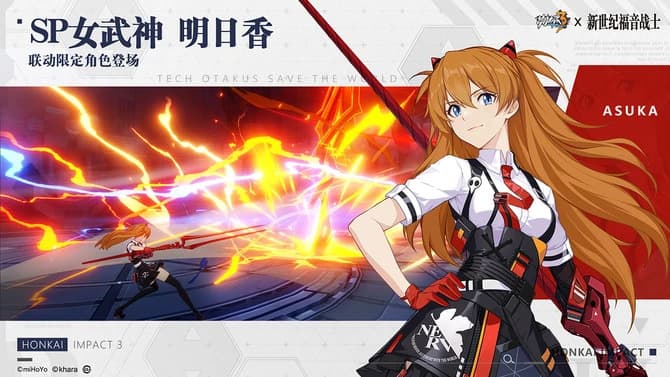God? Entity? Power source? The Aeons of Honkai: Star Rail are all of this, and more.
There's no force more mysterious or ever-present in the world of Honkai: Star Rail than the Aeons. One-part gods, a supernatural elemental force, and maybe even the thing to inspire the philosophical motivations of every being. Or, all of those things. However, that's an awful lot of vagueness in a game that doesn't exposition dump its lore for fans. The world of Honkai is full of secrets.
So, let's see if we can try and start to provide solutions to one of its biggest, the Aeons of Honkai: Star Rail.
Honkai: Star Rail - What are the Aeons?

If we're going to talk about the Aeons of Honkai: Star Rail then we need a starting point. Here's the official description of these entities, straight from the developer:
People know very little about the mysterious beings that dwell in the deep stellar ocean. Constrained by their limited cognition, intelligent lifeforms can only slightly perceive the Paths that Aeons tread upon, and rely on mere concepts and theories to vaguely comprehend the vastness of their powers. Eventually, through spoken legends these Aeons became the embodiments of abstract concepts. If anyone finds themselves treading on the Path of an Aeon, they will be inundated by a distant sensation, like being struck by a glace from light-years across the galaxy. Many believe that this is the only connection the Aeons and mortals can ever have.
Now, that's a lot of words to say very little. It would be easy to boil the Aeons down to being the gods of this constellar universe. However, that's also selling them a bit short. It would be better to describe the Aeons as abstract concepts, given life and manifesting into literal power sources.
A better way to think about all of this would be to borrow from the DC Comics universe and the entities known as the New Gods. Created by comics genius Jack Kirby in 1971, the New Gods are both literal Gods of the universe, but also live in their own plane of reality. In the same way, the Aeons appear to be both deities, but actual physical beings powered by and created from an object known as the Imaginary Tree.
What's that? Well, strap in, because to know more we're going to have to look at past games in the Honkai series. Yes, there's more.
Honkai: Third Impact

The world of Honkai dates back to the Honkai Impact mobile series. In this world, the Honkai is a constantly recurring cataclysm that takes different forms but always returns in each age. While cosmically powered, it manifests even as simple things such as floods, plagues, crashing meteors, and more. It also creates antities known as Honkai Beasts, which serve as its arbiters of destruction.
And because this is a world where every yin has its yang, this meant there was a positive, life-giving force in this universe. The Imaginary Tree is the place of birth for the entire universe--a hub for all creation, matter, and antimatter. And this includes the birth of the Honkai: Star Rail Aeons. We know this because of the origins of one Aeon called Akivili, tied to The Trailblazer path in-game.

The death of Akivili came when she sought out the ends of the known universe in order to find the Imaginary Tree--the source of all things. Likewise, the Paths created when an Aeon is born stems from power of the Imaginary.
Confused yet? This simply means that the Aeons are fonts of power from the Imaginary Tree and their mere existence in the universe was enough to create power for those that follow each path's philosophy.
In turn, each character in Honkai: Star Rail follows a specific path that also gives different elemental powers. In the case of Akivili and The Trailblazer, the player-character of Honkai: Star Rail is the one who follows the path of this same Aeon.
The Nameless
Speaking of our player-character, we also have to talk about The Nameless--the group of Trailblazers that you find yourself aligned with upon the start of the game. This group follows in the footsteps of Akivili, which we know thanks to this lore drop:
A thousand years ago, the Aeon Akivili traversed across worlds, laying down the star track that linked the islands of lone worlds in a sea of stars, leaving behind countless legends about the universe and exploration.
The above video's narrator says "You must follow the storm's traces in its wake," and in this case the wake is the path taken by each Aeon. In the case of The Nameless they literally follow the traces of Akivili, whose power is the source of energy for the Astral Express train--passed down upon the Aeon's death.
So, like we said: Aeons are equal parts god, philosophical mantra, and literal in-universe power source.
However, this also means that not all of Honkai: Star Rail's Aeons are forces for good. Nanook, the leader of the Antimatter Legion, is the representative of the Path of Destruction and is as close to the game's main villain as we have right now. Representing entropy and antilife, Nanook is the polar opposite of Avikili.
To be continued
And that is maybe the best way to think about each Aeon: Contracting and opposite forces, once given physical life and later becoming a measurable force. After all, nothing is truly ever destroyed. Much in the same way, the Aeons of Honkai: Star Rail continue on--for better and worse.
We'll most likely learn more about the true nature of the Aeons as time passes and Honkai: Star Rail sees updates. For now, there's still plenty of mysteries to solve. Let's hop aboard the Astral Express and find those answers together!
Stay tuned to esports.gg for esports news and more Honkai: Star Rail info.